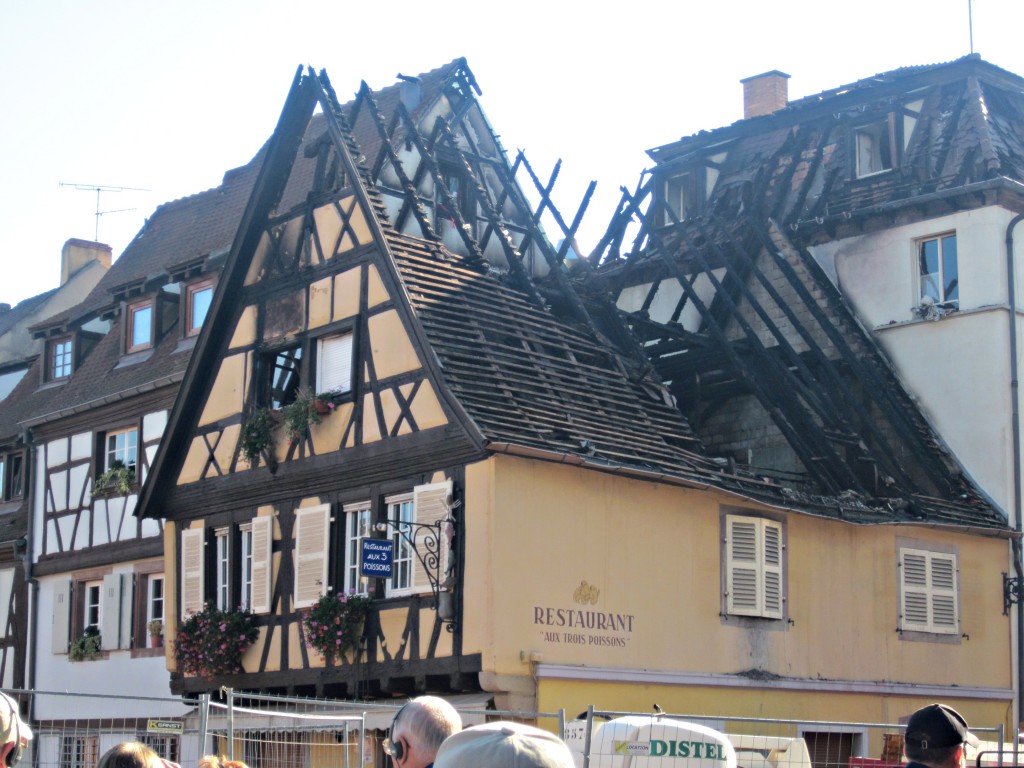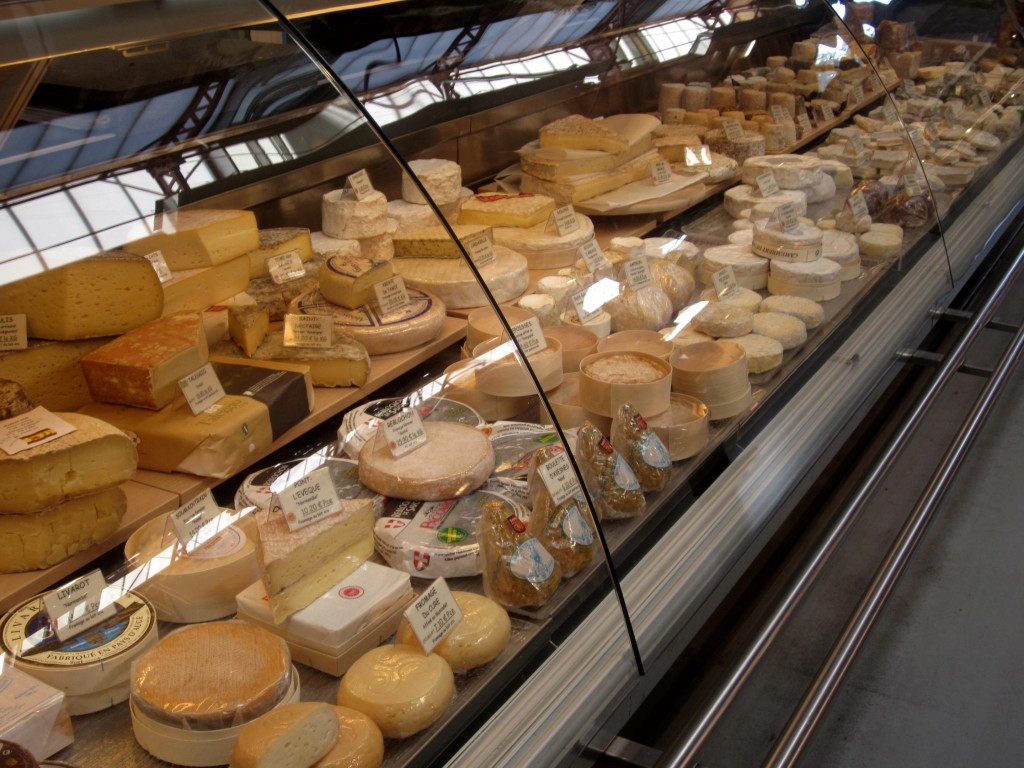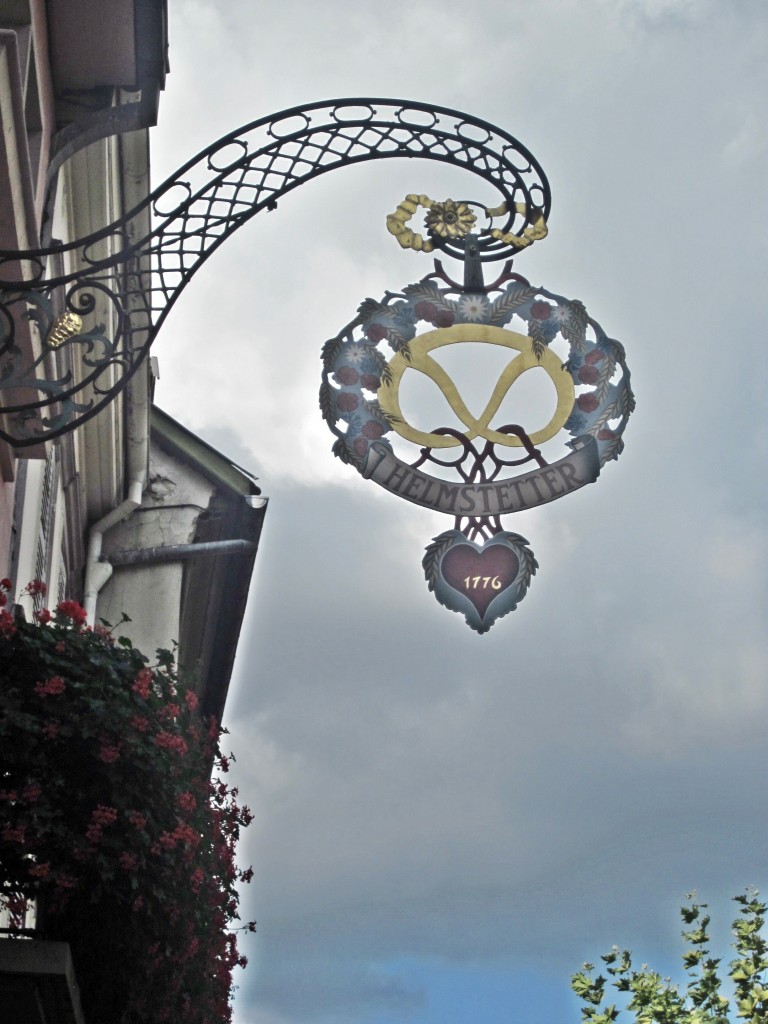This is Day 12 of our trip. We left the ship early and headed for Colmar, France. On the way we passed The “Statue of Liberty” in a round-about outside town. Frédéric Auguste Bartholdi (1834 – 1904) was the French sculptor who is best known for designing the Statue of Liberty (aka Liberty Enlightening the World). He was born in Colmar, in the Alsace region of France.
Frédéric Auguste Bartholdi (1834 – 1904) was the French sculptor who is best known for designing the Statue of Liberty (aka Liberty Enlightening the World). He was born in Colmar, in the Alsace region of France.
More than 1,000,000 francs were raised by subscription throughout France for the building of the statue. In 1879. Funds were collected throughout the United States for the building of the pedestal, about $300,000.
In 1881 Eiffel was contacted by Auguste Bartholdi who was in need of an engineer to help him to build the Statue of Liberty. Eiffel was selected because of his experience with wind stresses. Eiffel devised a structure consisting of a four legged pylon to support the copper sheeting which made up the body of the statue. The entire statue was erected at the Eiffel works in Paris before being dismantled and shipped to the United States.
It was rumored in France that the face of the Statue of Liberty was modeled after Bartholdi’s mother; and the body after his wife,
In October 1886, the structure was presented to the United States as the joint gift of the French and American people.The statue is 151 feet and 1 inch high, and the top of the torch is at an elevation of 305 feet 1 inch from mean low-water mark on Bedlow’s Island in New York Harbor.
This is Veronique, our bubbly, giggley town guide for Colmar.
A picturesque Canal in Colmar: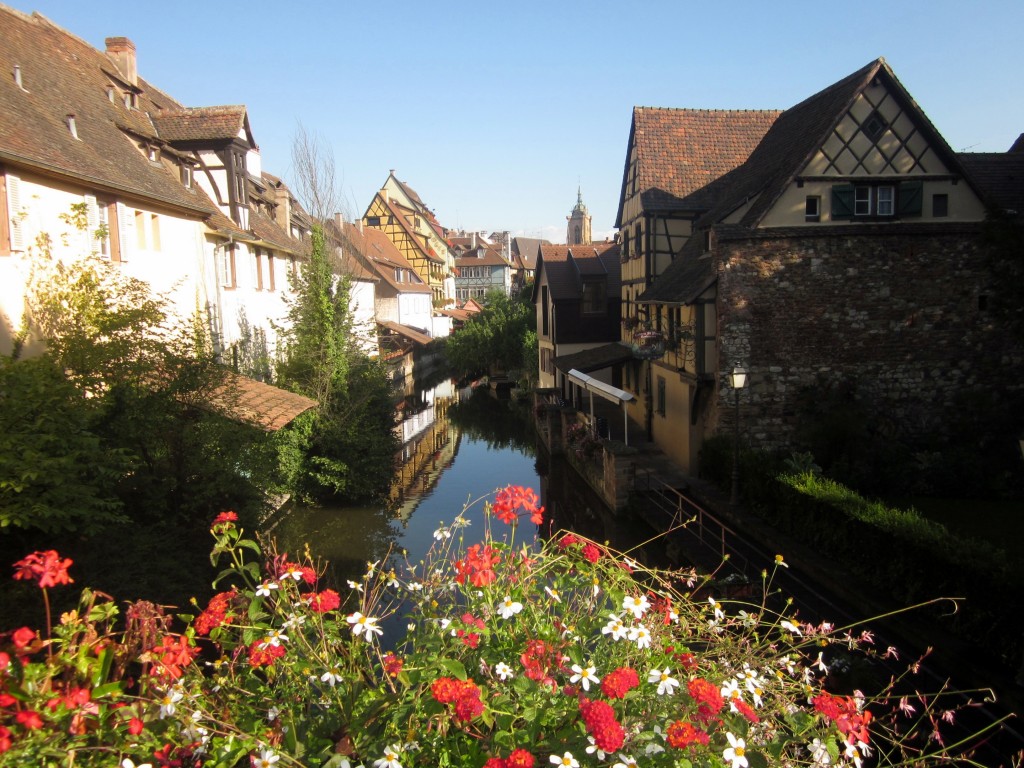 Colmar is situated along the Alsatian Wine Route and considers itself to be the “Capital of Alsatian Wine”. The city is renowned for its well preserved old town, its canals, and its numerous architectural landmarks and its museums.
Colmar is situated along the Alsatian Wine Route and considers itself to be the “Capital of Alsatian Wine”. The city is renowned for its well preserved old town, its canals, and its numerous architectural landmarks and its museums.
Half timbered house in Colmar This is a medieval DIY (Do-It-Yourself) house. All the timbers are numbered with carved Roman numerals. It could be taken down and reassembled. The red paint was originally pigs blood.
This is a medieval DIY (Do-It-Yourself) house. All the timbers are numbered with carved Roman numerals. It could be taken down and reassembled. The red paint was originally pigs blood.
Bretzels We passed a bakery and several folks went in to buy Bretzels (aka Pretzels). They were good, but needed some bright yellow mustard.
We passed a bakery and several folks went in to buy Bretzels (aka Pretzels). They were good, but needed some bright yellow mustard.
Storks We saw a lot of Stork symbols in the Alsace-Lorraine area. The story goes that in the Middle Ages talking to children about sex and babies came from was taboo. To explain where babies came from the folks looked at storks nesting on chimneys and said “Aha, These storks bring them and drop them down the chimney”. End of conversation.
We saw a lot of Stork symbols in the Alsace-Lorraine area. The story goes that in the Middle Ages talking to children about sex and babies came from was taboo. To explain where babies came from the folks looked at storks nesting on chimneys and said “Aha, These storks bring them and drop them down the chimney”. End of conversation.
Here is another pretty canal in the center of town.
Fishmongers homes Along one stretch of canal are these pretty half-timbered houses. In the Middle Ages this was a smelly slum that was occupied by fishermen and fishmongers.Now it’s fancy town houses. Times change, eh?
Along one stretch of canal are these pretty half-timbered houses. In the Middle Ages this was a smelly slum that was occupied by fishermen and fishmongers.Now it’s fancy town houses. Times change, eh?
We stopped at a downtown food market. It was unbelievably clean and well stocked with bakery goods, meats, and cheeses. I don’t think this place catered to tourists, but, rather, townsfolk. Although there was a rush to the pastry counter.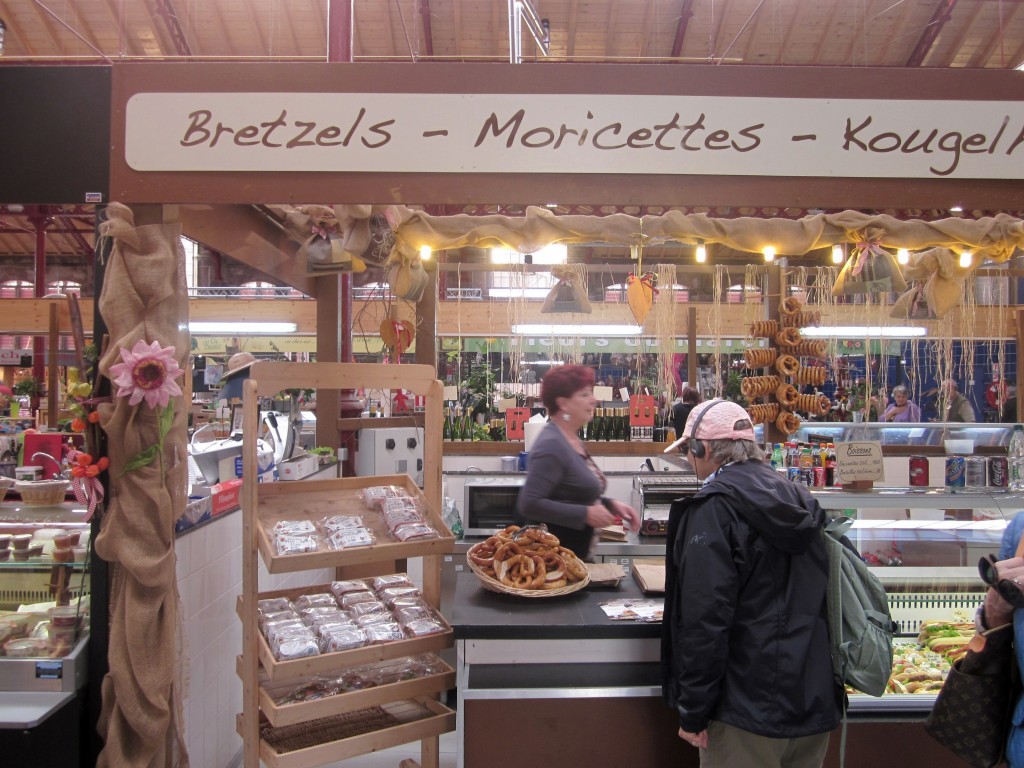 Mary Ann is eyeing a bretzel.
Mary Ann is eyeing a bretzel.
Tanners houses. These medieval houses were also smelly. The Tanners would rinse the hides in the canal and hang them to dry on their open air balconies. Now, more fancy townhouses.
These medieval houses were also smelly. The Tanners would rinse the hides in the canal and hang them to dry on their open air balconies. Now, more fancy townhouses.
Star of David? Many brewer emblems and symbols contain in addition to the classic tools like malt scoop, mash fork and beer tumbler also the hexagram (six pointed star), the so called beer or brewing star, which in literature is often referred to as oldest guild emblem of brewers.
Many brewer emblems and symbols contain in addition to the classic tools like malt scoop, mash fork and beer tumbler also the hexagram (six pointed star), the so called beer or brewing star, which in literature is often referred to as oldest guild emblem of brewers.
The Colmar Unterlinden Museum This was our mornings destination. Inside is the famous The Isenheim Altarpiece. It is an altar piece painted by the German artist Matthias Grünewald in 1512-1516.
This was our mornings destination. Inside is the famous The Isenheim Altarpiece. It is an altar piece painted by the German artist Matthias Grünewald in 1512-1516.
Here is Veronique explaining a small model of the altarpiece. The altarpiece has two sets of wings, displaying three configurations with separate displays of the life of Jesus. Kind of like a big “fold out” card. It was painted for the Monastery of St. Anthony inIsenheim near Colmar, which specialized in hospital work. The Antonine monks of the monastery were noted for their care of plague sufferers as well as their treatment of skin diseases, such as ergotism.
The altarpiece has two sets of wings, displaying three configurations with separate displays of the life of Jesus. Kind of like a big “fold out” card. It was painted for the Monastery of St. Anthony inIsenheim near Colmar, which specialized in hospital work. The Antonine monks of the monastery were noted for their care of plague sufferers as well as their treatment of skin diseases, such as ergotism.
Here is the full sized first panel. Note the tourist using iPads as cameras.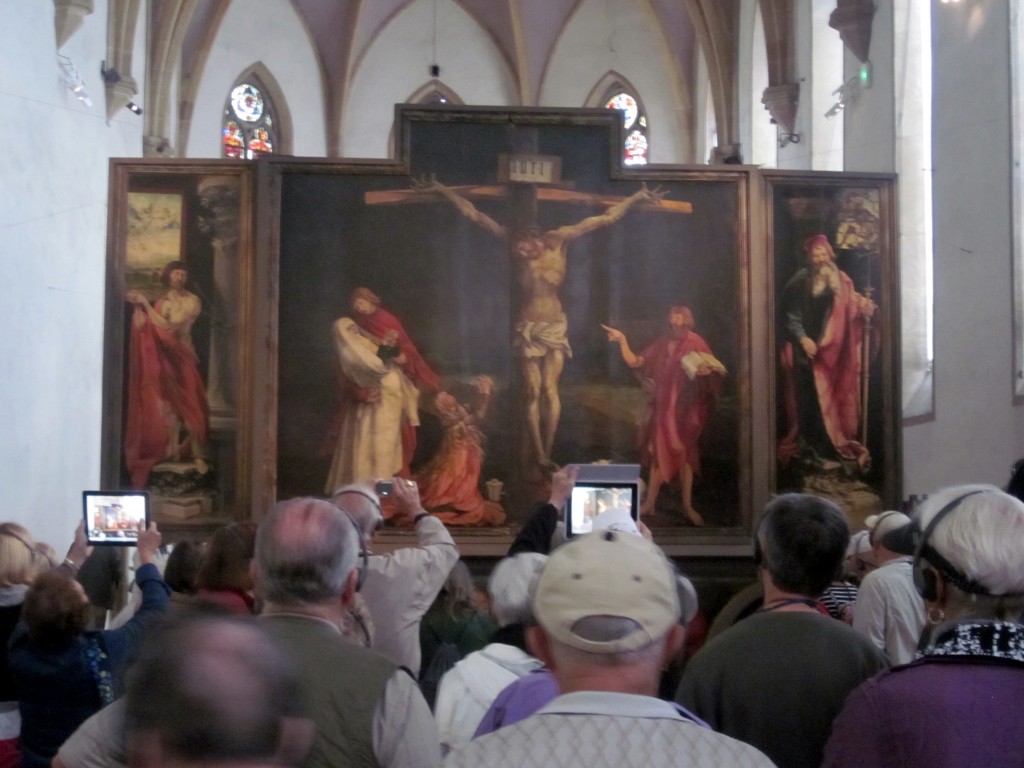
Here’s a small corner of another panel.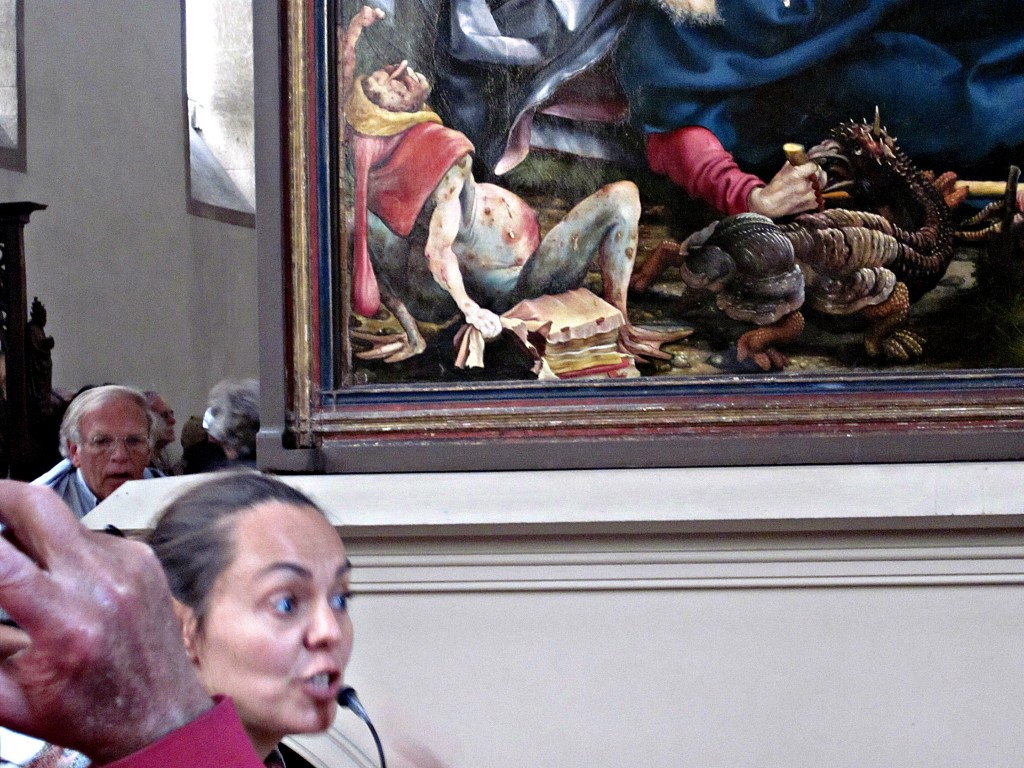
I think this guy has Ergotism, the effect of long-term ergot poisoning, traditionally due to the ingestion of the alkaloids produced by the Claviceps purpurea fungus which infects rye and other cereals, It is characterised by a great plague of swollen blisters which consumed the people by a loathsome rot, so that their limbs were loosened and fell off before death.
This is what the altarpiece looks like without the crowds jamming the Chapel. You can see the panels stacked up – one behind the other.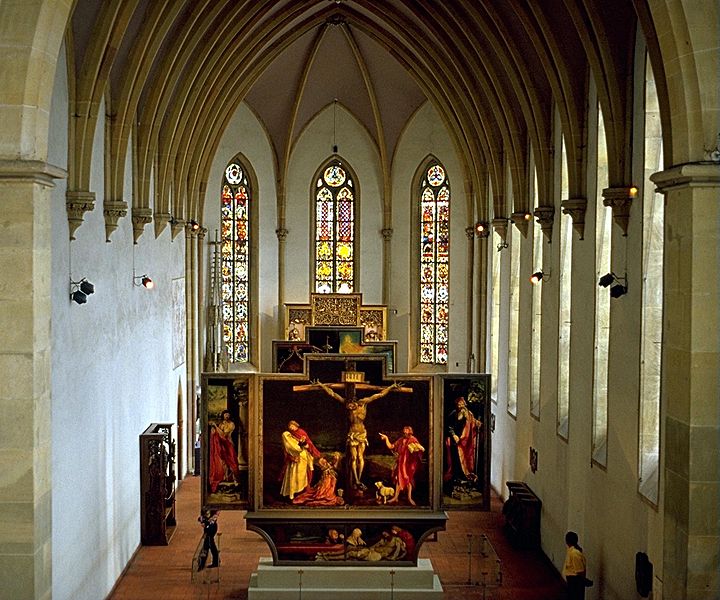
We left Colmar en route to Requewhir passing beautiful vineyards.
 Requewihr is a popular tourist attraction for its historical architecture, Riquewihr is also known for the Riesling and other great wines produced in the village. Riquewihr looks today more or less as it did in the 16th century (Except for the tourists!).
Requewihr is a popular tourist attraction for its historical architecture, Riquewihr is also known for the Riesling and other great wines produced in the village. Riquewihr looks today more or less as it did in the 16th century (Except for the tourists!).
Riquewihr was one of the few towns in the area not to be badly damaged during World War II. The town is surrounded by its medieval fortifications and is overlooked by a castle from the same period that is today a museum. The village is a member of the Les Plus Beaux Villages de France (“The most beautiful villages of France”) association.
We poked around the little shops and alleys and looked at post cards.
We eventually made it to the top of the town and checked out the original moated gate complete with draw bridge (missing).
This was the other day that the ship provided 15 euros apiece for our lunch. We brought our own from the ship and sat down near here to eat. We were immediately visited by a cute cat, obviously not feral. He and I shared my meat and cheese sandwich. We heard some soft purring and couldn’t figure out what it was. It wasn’t the cat, he was too busy eating. The purring became a soft moan. I looked up and on the top of the wall above us was this nice pooch. He just sat there softly moaning. Naturally, he got a chunk of my sandwich, too.
We heard some soft purring and couldn’t figure out what it was. It wasn’t the cat, he was too busy eating. The purring became a soft moan. I looked up and on the top of the wall above us was this nice pooch. He just sat there softly moaning. Naturally, he got a chunk of my sandwich, too.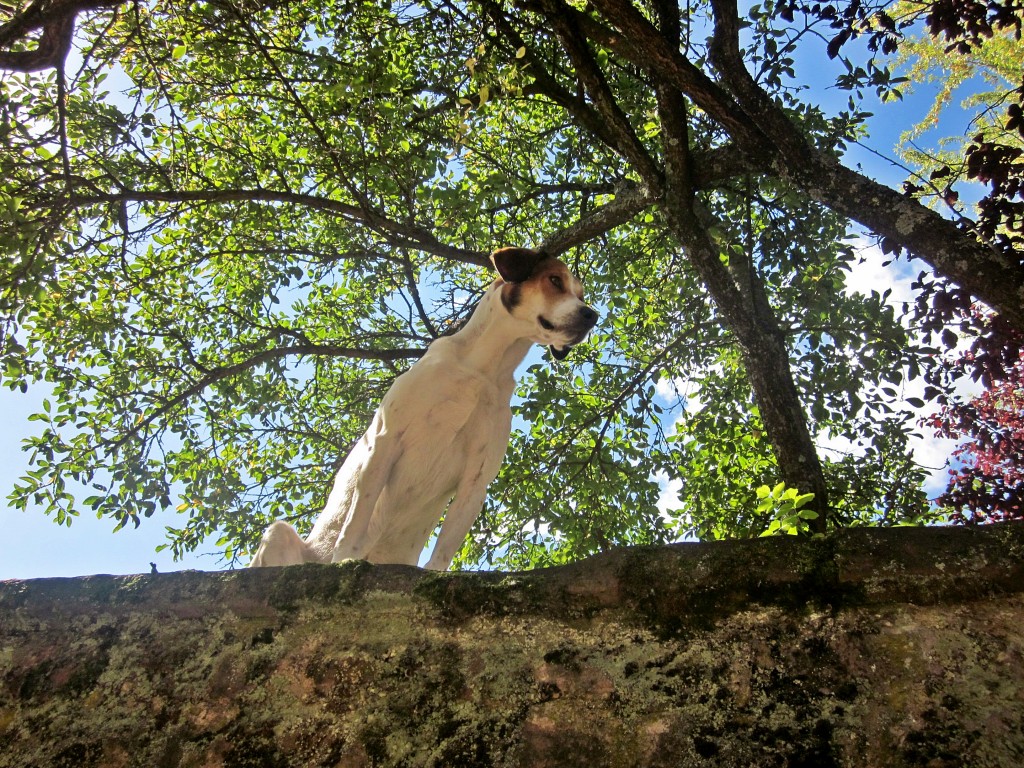 Across from where we sat there was part of the outside of the old town wall. You knew it was outside the wall because there was a medieval toilet alcove there. Apparently, your “business” dropped to the ground right there.
Across from where we sat there was part of the outside of the old town wall. You knew it was outside the wall because there was a medieval toilet alcove there. Apparently, your “business” dropped to the ground right there.  The clock on the town hall said it was time to leave. We knew it showed the correct time – they always did.
The clock on the town hall said it was time to leave. We knew it showed the correct time – they always did.
As we left Riquewhir we passed this place. it was wall-to-wall flowers and yard ornaments. All it needed to be complete was a stork nest on the chimney.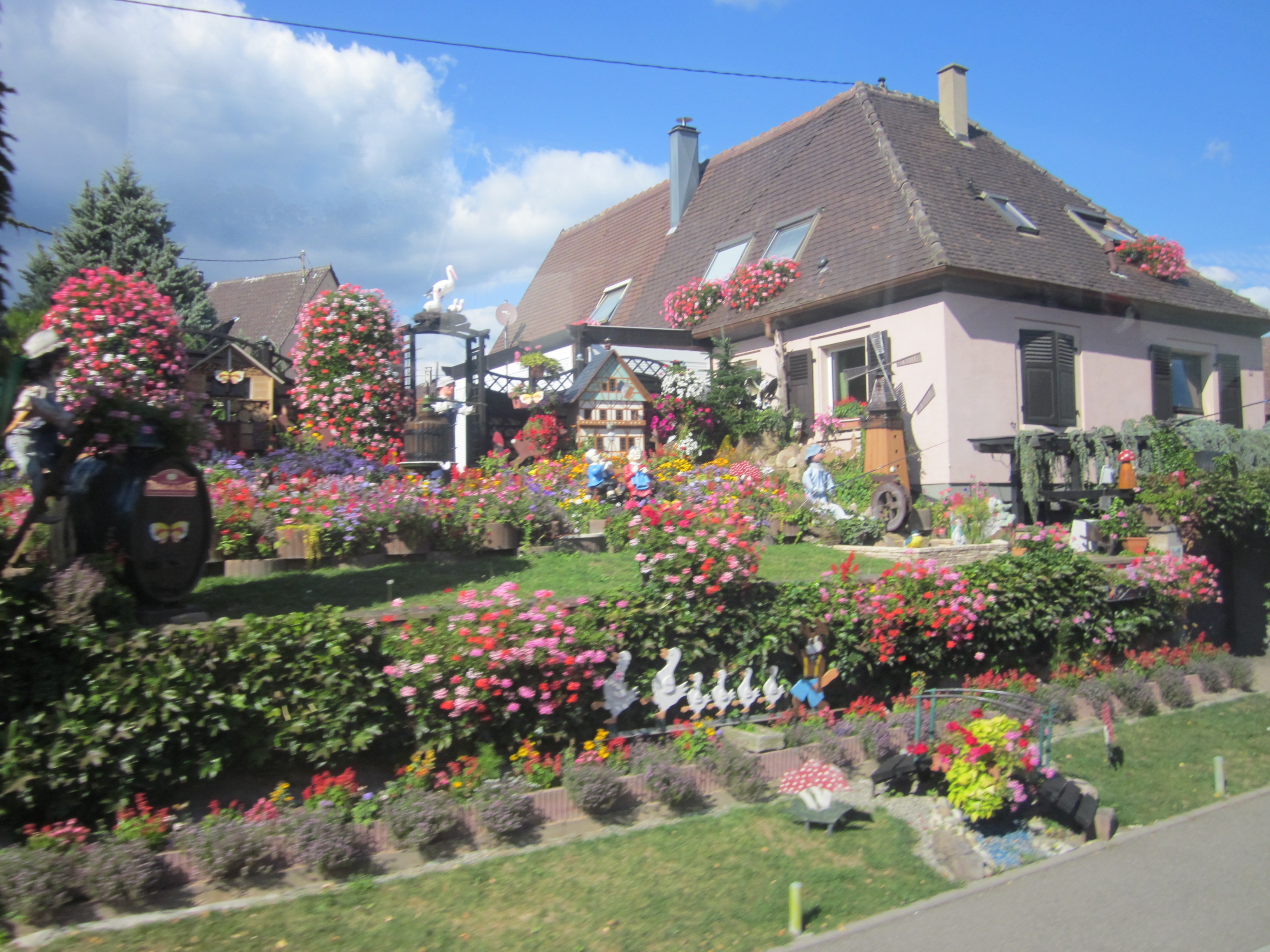
We are now on our way to the nearby town Barr to do some more wine tasting.We visited the Klipflel Winery in Barr and had an enjoyable time sampling the many varieties of Alsacian wine (mostly white Rieslings). The winery is a family owned operation and the son of the family explained each wine we sampled. I like the semi sweet wines. Mary Ann preferred the drier red wines.
The winery is a family owned operation and the son of the family explained each wine we sampled. I like the semi sweet wines. Mary Ann preferred the drier red wines. Notice that we still had our headphones on. They were great! They were comfortable and we could hear clearly even though we were 50 to 100 feet from the speaker.
Notice that we still had our headphones on. They were great! They were comfortable and we could hear clearly even though we were 50 to 100 feet from the speaker.
I don’t know what this was, but it was on the wall and caught my attention.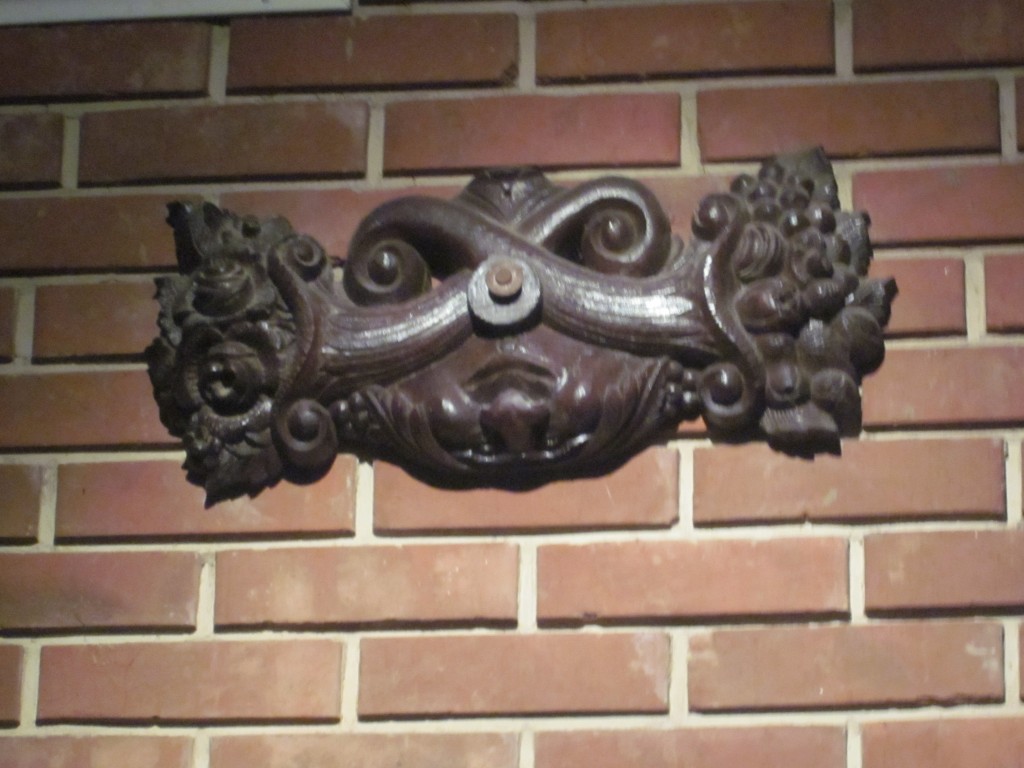
That was it for wine tasting in the Alsace Lorraine region. We headed back to the ship to tuck into tonights dinner which included “Herb Crusted Rack of Lamb on Thtme Gravy Served with Rosemarie Potato Gratin and Provencal Vegetables“.
Tomorrow, Day 13, we explore Strasbourg…

